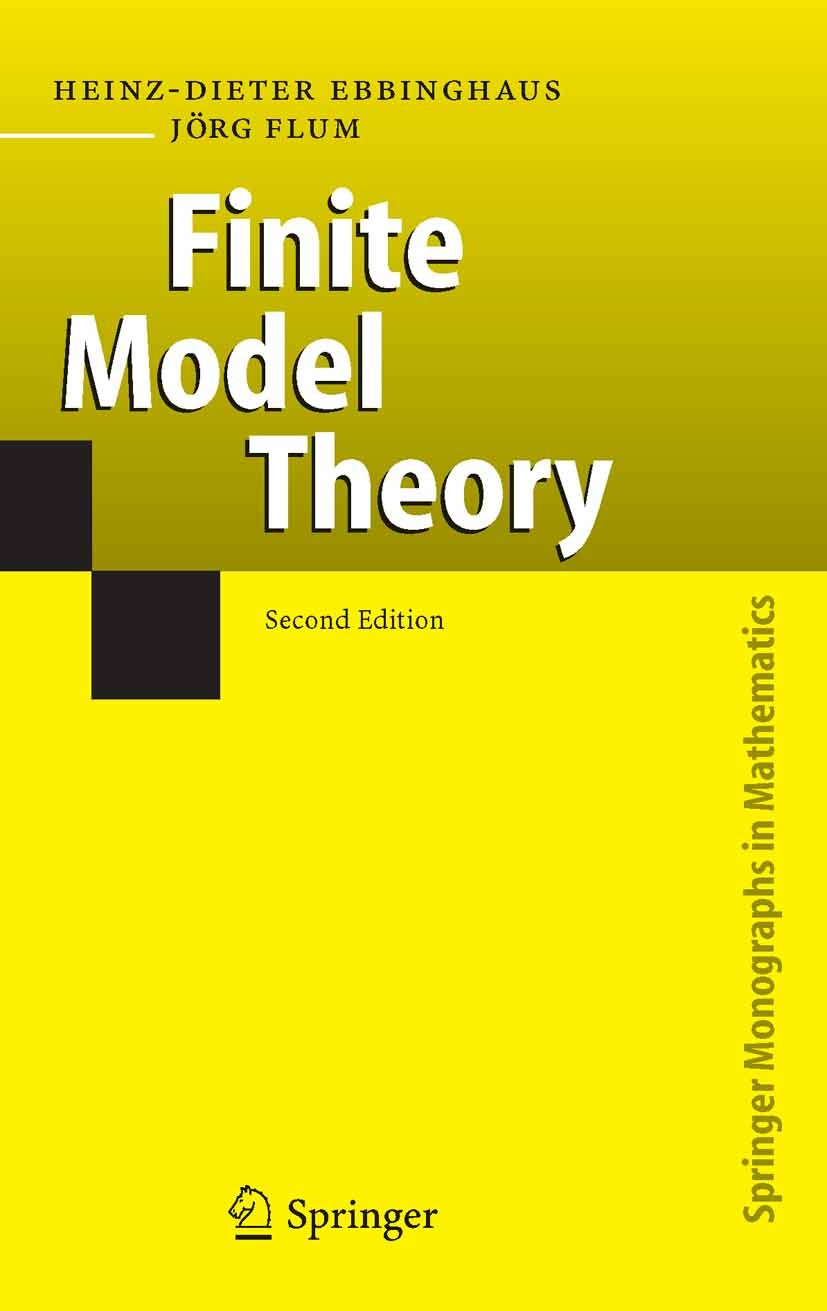| 书目名称 | Finite Model Theory |
| 副标题 | Second Edition |
| 编辑 | Heinz-Dieter Ebbinghaus,Jörg Flum |
| 视频video | http://file.papertrans.cn/344/343636/343636.mp4 |
| 概述 | Explores connections between axiomatizability of classes of finite structures and their complexity with respect to time and space bounds.Includes important logics: fixed-point logics, transitive closu |
| 丛书名称 | Springer Monographs in Mathematics |
| 图书封面 |  |
| 描述 | Finite model theory, the model theory of finite structures, has roots in clas sical model theory; however, its systematic development was strongly influ enced by research and questions of complexity theory and of database theory. Model theory or the theory of models, as it was first named by Tarski in 1954, may be considered as the part of the semantics of formalized languages that is concerned with the interplay between the syntactic structure of an axiom system on the one hand and (algebraic, settheoretic, . . . ) properties of its models on the other hand. As it turned out, first-order language (we mostly speak of first-order logic) became the most prominent language in this respect, the reason being that it obeys some fundamental principles such as the compactness theorem and the completeness theorem. These principles are valuable modeltheoretic tools and, at the same time, reflect the expressive weakness of first-order logic. This weakness is the breeding ground for the freedomwhich modeltheoretic methods rest upon. By compactness, any first-order axiom system either has only finite models of limited cardinality or has infinite models. The first case is trivial because finit |
| 出版日期 | Book 1995Latest edition |
| 关键词 | 0-1-laws; Finite model theory; complexity; complexity theory; descriptive complexity theory; fixed-point |
| 版次 | 2 |
| doi | https://doi.org/10.1007/3-540-28788-4 |
| isbn_ebook | 978-3-540-28788-9Series ISSN 1439-7382 Series E-ISSN 2196-9922 |
| issn_series | 1439-7382 |
| copyright | Springer-Verlag Berlin Heidelberg 1995 |
 |Archiver|手机版|小黑屋|
派博传思国际
( 京公网安备110108008328)
GMT+8, 2025-12-13 21:40
|Archiver|手机版|小黑屋|
派博传思国际
( 京公网安备110108008328)
GMT+8, 2025-12-13 21:40


